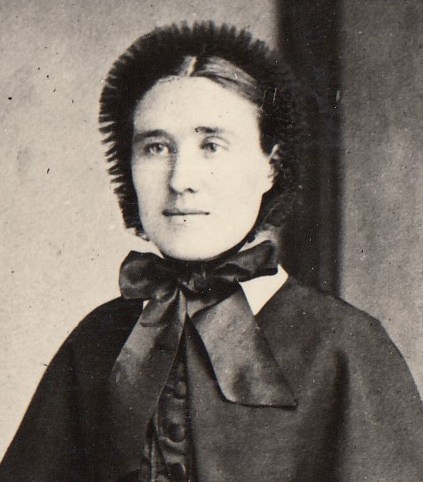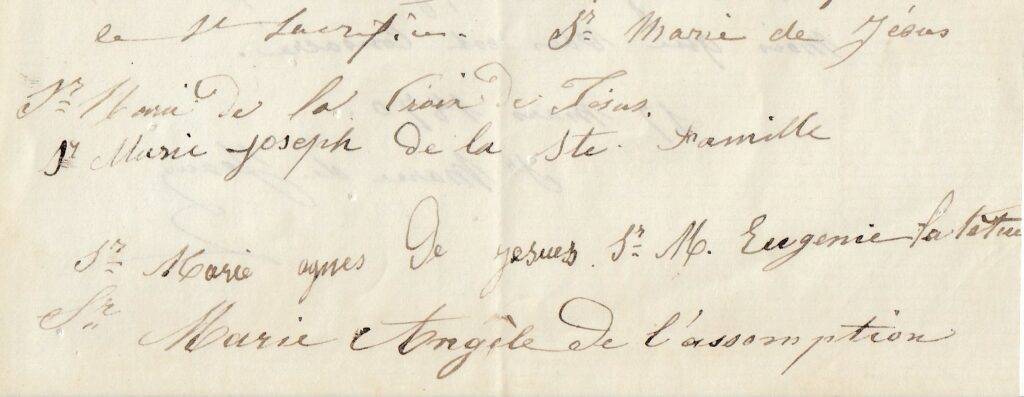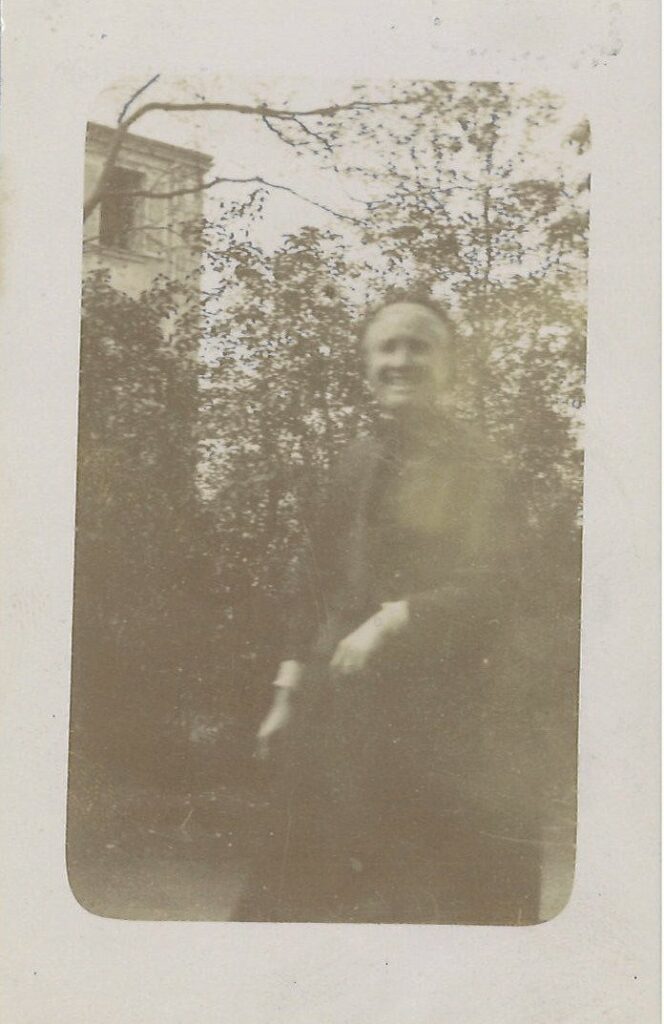Eugénie Margueritte, a pioneer in the relationship between lay people and the Little Sisters

In June 2025, a session organised by the Commission for Sharing the Charism with the Laity was held in Grenelle. The archives department invites you to explore the subject of relations between lay people and the LSA in more depth with this article on the history of the very first lay person with whom the congregation had contact: Eugenie Margueritte, known as Sr Eugenie.
Her full name was Jeanne Caroline Eugenie Margueritte, born around 1847. She was a young orphan from a modest background (her mother was a domestic servant) who had lost her mother and then her grandmother during her childhood. Her story is reminiscent in many ways of that of Antoinette Fage, which probably explains in part the bond that developed between them.
A lady, Mlle Letrône, had taken the little girl in after her grandmother’s death and it was she who introduced her to Mlle Fage, then director of the Dames de Mesnard orphanage. The little girl, initially very intimidated, was immediately won over by Antoinette and quickly realised that she could find a mother in her. Finally, after a few twists and turns, Eugenie was able to join the children Antoinette was looking after, and she became very attached to her, which was reciprocated. Little by little, all the children got used to thinking of her as ‘Mademoiselle’s’ adopted daughter, and, rather than being jealous, they were happy for her.[1]
The orphanage in question, founded in 1861 by the Dames de Mesnard, aimed to prepare young orphans for their first communion when they were past the usual age for doing so and were therefore between 12 and 21 years old. It was a small establishment and there were never more than 18 children. The young girls received religious instruction, performed the usual devotions of the time, and spent the rest of their time working, mainly on sewing (for example, they ‘did all the Dominicans’ laundry’.[2] But ‘Mademoiselle Antoinette’ also offered them recreation, a few games and walks, and we can imagine that the atmosphere she created at the establishment was rather joyful.
Over the months, relations between Antoinette and the Ladies of Mesnard deteriorated to the point where the Ladies decided to get rid of Antoinette without telling her. At that time, Miss Fage had already met Father Pernet, who took advantage of the situation to tell her about his plan to make her the superior of the community he was founding.
This came as a shock and was heart-breaking for Antoinette, who, among other things, did not want to leave her children, especially her beloved Eugenie, who was about 18 years old at the time. And what pain when the ladies forced her to leave the children without even giving her the opportunity to say goodbye! That same evening, she had to organise the move of her belongings to the flat on Rue St Dominique, which had already been rented, and she left immediately to undergo a month of formation with the Sisters of the Assumption.
Eugenie and Antoinette each thought independently of trying to join the other. Antoinette hesitated to write to the Ladies of Mesnard to ask to take Eugenie with her. Father Pernet advised her not to do so, but allowed her to write directly to Eugenie.
[1] See the testimony attributed to Sr Eugenie, 2A2B n°95
[2] Idem
This letter has been preserved, and here is an excerpt:
«My child,
(…) I need not repeat that my feelings towards you have not changed. Whenever and wherever I may be, you can be sure that I will always welcome you. Just think carefully, don’t do anything rash (…). Above all, I want you to be happy, and to ensure this, or at least to try to achieve it, there is nothing I am not prepared to do. Whether you stay where you are or come with me, my affection for you will be no less strong, and you will always find me ready to help you, on the day and at the hour that God wills. »
Upon receiving this letter, Eugenie asked the Ladies of Mesnard for permission to leave them to join her adoptive mother, and when she received it, she tried to find her, which was not without difficulty, as Etienne Pernet himself recounts to Antoinette in his letter of the 22nd of June 1865:
“My dear daughter,
We had barely returned with Father Picard, around 9 o’clock in the evening, when I was asked to come to the parlour. It was Eugenie accompanied by a young lady, whose name I have forgotten, but who is known to you, since she was the one who had brought Eugenie to the Mes[dames] de Mesnard in the past. I learned that Eugenie wanted to follow you and had finally persuaded these ladies to entrust her to you. But where could she find you? After a long and fruitless search for you in Rue St Dominique, where you are not known, Eugenie came to me. I did not say much, but deep down I was happy. »
After that, Eugenie never left her dear mother’s side until her death.
The young girl moved into Rue St Dominique with her adoptive mother, the first caregivers and the father of one of them, who was a widower and had nowhere else to go.[1] She helped with the housework and cooking, ran errands, delivered mail and, on occasion, worked as a caregiver or begged for alms. She also performed various services for the Fathers of Rue François 1er, as did the entire community, which took care of their laundry, for example.
[1] This refers to Nicolas Martin, known as ‘Papa Nicolas,’ father of Léontine Martin (who left the congregation in 1867).
Eugenie seems to have had a cheerful and happy disposition, as can be seen from the letter Antoinette wrote to Father Pernet in July 1865:
« Eugenie is becoming more and more playful, which means I have to scold her sometimes, but that doesn’t stop her from being an excellent child. »
Father Pernet also tried to get her to study a little, as can be seen in the letter he wrote to Marie de Jésus on the 18th of July 1865:

« Teach Eugenie a little meditation and, in the beginning, allow her to read slowly and thoughtfully from a good book on piety, until she feels she has enough strength of reflection to meditate without a book for half an hour at a time. »
Little by little, time passed and the community moved several times. The sisters took their first vows (at the time, these were “private” vows, i.e., without canonical validity), but Eugenie did not.
We cannot be certain why, as no personal writings by her have been preserved. It was certainly not a refusal on the part of the founders who, on the contrary, insisted that she take her vows, which Eugenie refused to do.
The author of the biography of Marie de Jésus (published in 1908) puts forward the following hypothesis:
« [in 1875], all took that holy habit, all except one… dear Eugenie Marguerite, who, despite the devotion that filled her heart, did not feel called by God to religious life. In the righteousness of her soul, to all the advances made to her, both by the founder and by Mother Marie de Jésus (…) she replied: ‘I am yours forever, but I will not be a nun’. (…) She loved the poor, she loved the work, and she never ceased to bear witness to this by giving of herself in all circumstances. (…) The sisters even took to calling her Sr Eugenie. Throughout her life, she wore the first habit worn by the caregivers, the one with the cap that later became the one worn by the postulants in the congregation. What set her apart from them was that she was allowed to wear the gold ring worn by those who had taken their perpetual vows. »
In 1870, when the house on Rue Violet was purchased, a prayer was addressed to Saint Joseph. We have the manuscript of this prayer in the archives, and Sr Eugenie signed it with the words ‘Sr M. Eugenie la têtue’ (Sister M. Eugenie the stubborn one) (below, 4th line on the right)

Why ‘the stubborn one’? Because she refused to take her vows?
In any case, Eugenie rendered many services and worked at the Mission. For example, she cared for the wounded during the siege of Paris and then during the Commune, like the Little Sisters. She also remained very close to Marie de Jésus, accompanying her regularly on her travels. An example of this can be found in a letter from Antoinette Fage to Petite Mère Madeleine[1] on the 27th of August 1877, during a stay with Baroness Reille
[1] Mother Marie Madeleine (of the Sacred Heart), Maria TOMKOWICZ, Assistant General from 1872 to 1905
« [Mrs Reille] has me sleep alone in her room and Eugenie in a small room next to mine. When she has no one else, she takes her meals with us, otherwise she has them served in my room. (…)
She also accompanied her several times to Lourdes, where she served as her secretary to relieve her of her abundant correspondence. She sometimes wrote the reports sent to the Mother House, and her letters were greatly appreciated. Father Pernet himself wrote to Antoinette on 1 September 1878:
« Eugenie is delightful in her letters. Tell her so on my behalf, adding the thousand tender feelings you also have in your heart for her.»
The death of Marie de Jésus in 1883 was a great shock to Eugenie, who received many expressions of sympathy at that time.
She herself lived until 1899, her death occurring a few months after that of Father Pernet. She therefore shared the life of the community for more than 30 years. We do not have many other sources that allow us to know exactly what she did during all that time, except when she is mentioned in letters or the Mother House journal to indicate that she performed a particular service or was asked to run an errand.

The photo we have of her later years, although blurred, clearly shows the liveliness and cheerfulness she seems to have retained throughout her life.
Céline Hirsch, Archiviste de la Congrégation, octobre 2025
